SADEQUAIN

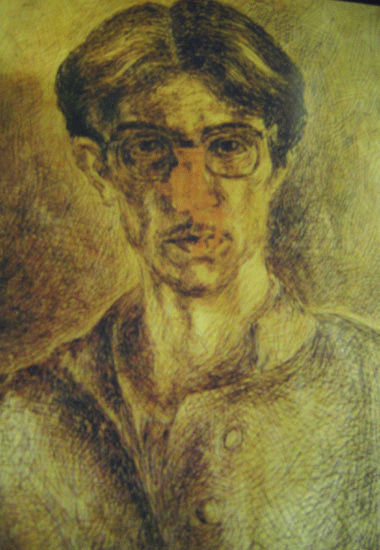
Sadequain - Self Portraits

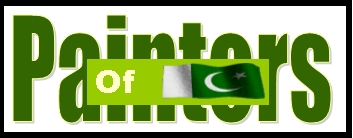


Sadequain - Self Portraits
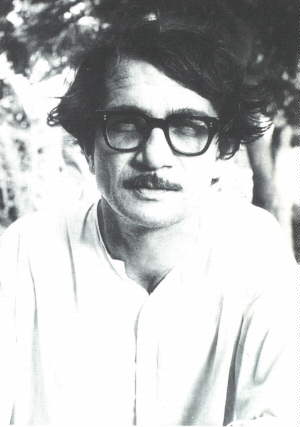 Sadequain (1930-1987) would go down in the history of painting in Pakistan in particular and rest of the world in general as a genuine painter, who left so many footsteps that many are copying till date.
Syed
Sadequain Ahmed Naqvi,
also often referred to as Sadequain
Naqqash, or just Sadequain was born in 1930.
At the age of 31, his work won recognition at the 1961 Paris Biennale. Sadequain had a prolific career and much of his work is displayed in public places. During his life, Sadequain became a cult figure with a large following from all walks of life. The content of his work has wider appeal, and the early works addressed social evils. In the later decades, Sadequain used the unifying spirit of calligraphy to appeal to the masses, who came in large numbers to see his exhibitions.
Basically, Sadequain was a social commentator. His murals generally depicted
man’s endless quest to discover and develop the endless potentialities that lie
within him and without. The whole pageant of man’s triumphal progress, past,
present and future is captured in line and color in one magnificent form. His
murals are densely filled and tightly packed with images to render adequately
the lofty subject.
Sadequain (1930-1987) would go down in the history of painting in Pakistan in particular and rest of the world in general as a genuine painter, who left so many footsteps that many are copying till date.
Syed
Sadequain Ahmed Naqvi,
also often referred to as Sadequain
Naqqash, or just Sadequain was born in 1930.
At the age of 31, his work won recognition at the 1961 Paris Biennale. Sadequain had a prolific career and much of his work is displayed in public places. During his life, Sadequain became a cult figure with a large following from all walks of life. The content of his work has wider appeal, and the early works addressed social evils. In the later decades, Sadequain used the unifying spirit of calligraphy to appeal to the masses, who came in large numbers to see his exhibitions.
Basically, Sadequain was a social commentator. His murals generally depicted
man’s endless quest to discover and develop the endless potentialities that lie
within him and without. The whole pageant of man’s triumphal progress, past,
present and future is captured in line and color in one magnificent form. His
murals are densely filled and tightly packed with images to render adequately
the lofty subject.
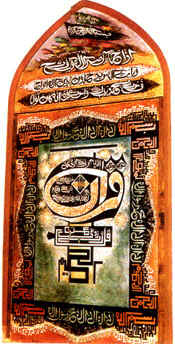 The images that
Sadequain's brush strokes produced are not only rich in symbolic meaning but
visually so much variegated that the eye travels fascinated from point to point.
Sadequain was responsible for the renaissance of Islamic Calligraphy in
Pakistan. He was one of the greatest calligraphers of his time who transformed
the art of calligraphy into eye-catching expressionist paintings. His
calligraphy comes from a divine inspiration, giving it a dimension of space and
movement. He carried the script with a flourish in all directions, giving it the
power of space, vigour and volume. In Pakistan, the art of calligraphy was
relegated to a second class status until Sadequain adapted this medium in the
late nineteen sixties. To that time, calligraphy was restricted to few "ustads"
of drawing in schools and were not avaialable to general public. After Sadequain
transformed the art of calligraphy into a mainstream art form, most of the known
Pakistani artists have followed Sadequain and calligraphic art now dominates the
art scene. Sadequain also painted in bold form the poetic verses of Ghalib,
Iqbal and Faiz, which illustrate his love for classical literature. He belonged
to the school of thought, which enriched realism with lyricism. Sadequain wrote
thousand of quartets and published them. Sadequain is the only painter who has
been copied openly and widely by many painters and even the copies fetch large
sums to the copiers, an irony since the artist himself hardly ever sold his
works in spite of offers coming from the royals and the common public. As an
example his masterpiece rendition of Sureh-e-Rehman has been copied widely by
many known painters of the modern era.
The images that
Sadequain's brush strokes produced are not only rich in symbolic meaning but
visually so much variegated that the eye travels fascinated from point to point.
Sadequain was responsible for the renaissance of Islamic Calligraphy in
Pakistan. He was one of the greatest calligraphers of his time who transformed
the art of calligraphy into eye-catching expressionist paintings. His
calligraphy comes from a divine inspiration, giving it a dimension of space and
movement. He carried the script with a flourish in all directions, giving it the
power of space, vigour and volume. In Pakistan, the art of calligraphy was
relegated to a second class status until Sadequain adapted this medium in the
late nineteen sixties. To that time, calligraphy was restricted to few "ustads"
of drawing in schools and were not avaialable to general public. After Sadequain
transformed the art of calligraphy into a mainstream art form, most of the known
Pakistani artists have followed Sadequain and calligraphic art now dominates the
art scene. Sadequain also painted in bold form the poetic verses of Ghalib,
Iqbal and Faiz, which illustrate his love for classical literature. He belonged
to the school of thought, which enriched realism with lyricism. Sadequain wrote
thousand of quartets and published them. Sadequain is the only painter who has
been copied openly and widely by many painters and even the copies fetch large
sums to the copiers, an irony since the artist himself hardly ever sold his
works in spite of offers coming from the royals and the common public. As an
example his masterpiece rendition of Sureh-e-Rehman has been copied widely by
many known painters of the modern era.
The brush strokes stopped on February 10, 1987 in Karachi, when the greatest of the painters and calligraphists was just 57. Many have imitated his work since then, but he remains to this date a very class of his own, which cannot be imitated, copied or reproduced.
Calligraphic Work
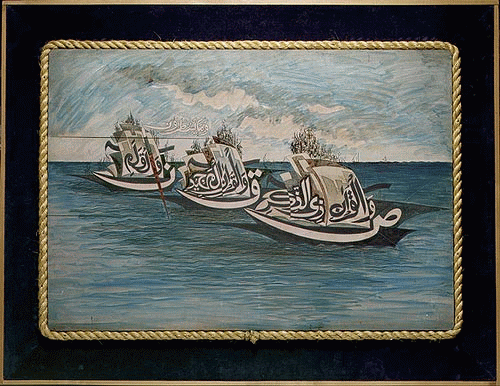
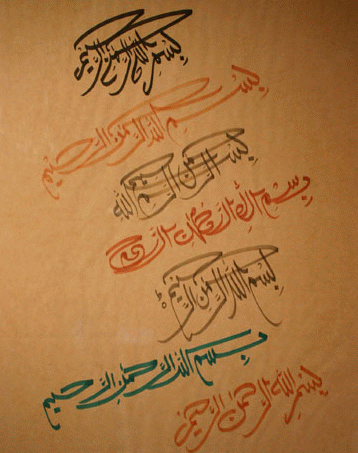
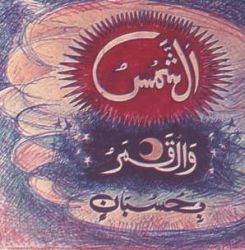
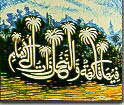

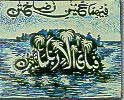

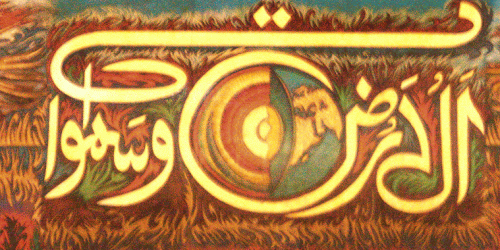
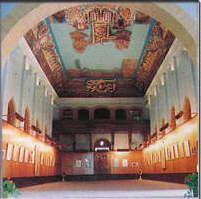 Sadequain Art Gallery:
Frere Hall
-
constructed in 1868, this remarkable historical building hosts the last internationally known fine art work of the late Sadequain. Since Gallery Sadequain's in 1990, the hall hosted a number of group and solo fine arts exhibitions, seminars, workshops, two theatres on experimental basis, farshi nashist for small mosharias and ghazaliat programmes.
Sadequain Art Gallery:
Frere Hall
-
constructed in 1868, this remarkable historical building hosts the last internationally known fine art work of the late Sadequain. Since Gallery Sadequain's in 1990, the hall hosted a number of group and solo fine arts exhibitions, seminars, workshops, two theatres on experimental basis, farshi nashist for small mosharias and ghazaliat programmes.
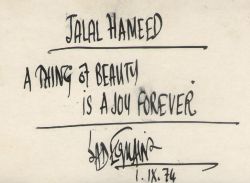
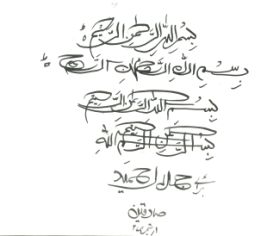
|
| HOME PAGE | BACK | SADEQUAIN - II | SADEQUAIN - III | SADEQUAIN - IV | SADEQUAIN'S MURALS | Copyright©JalalsPages - 2005 - 2009 |